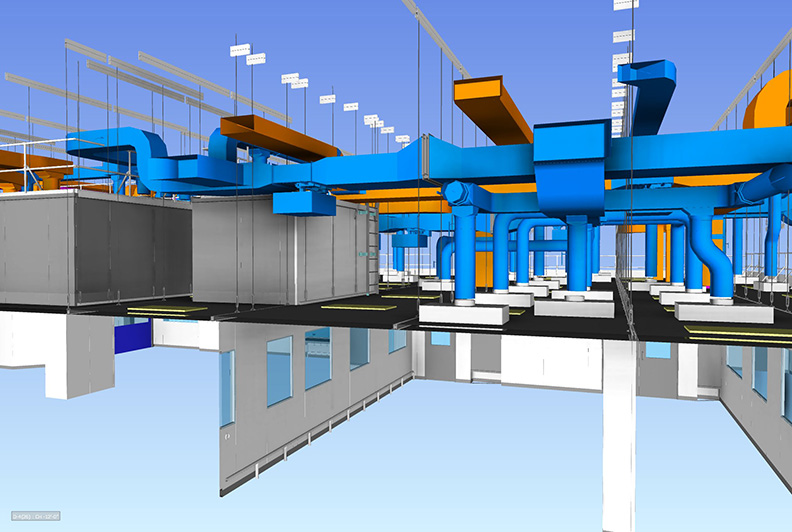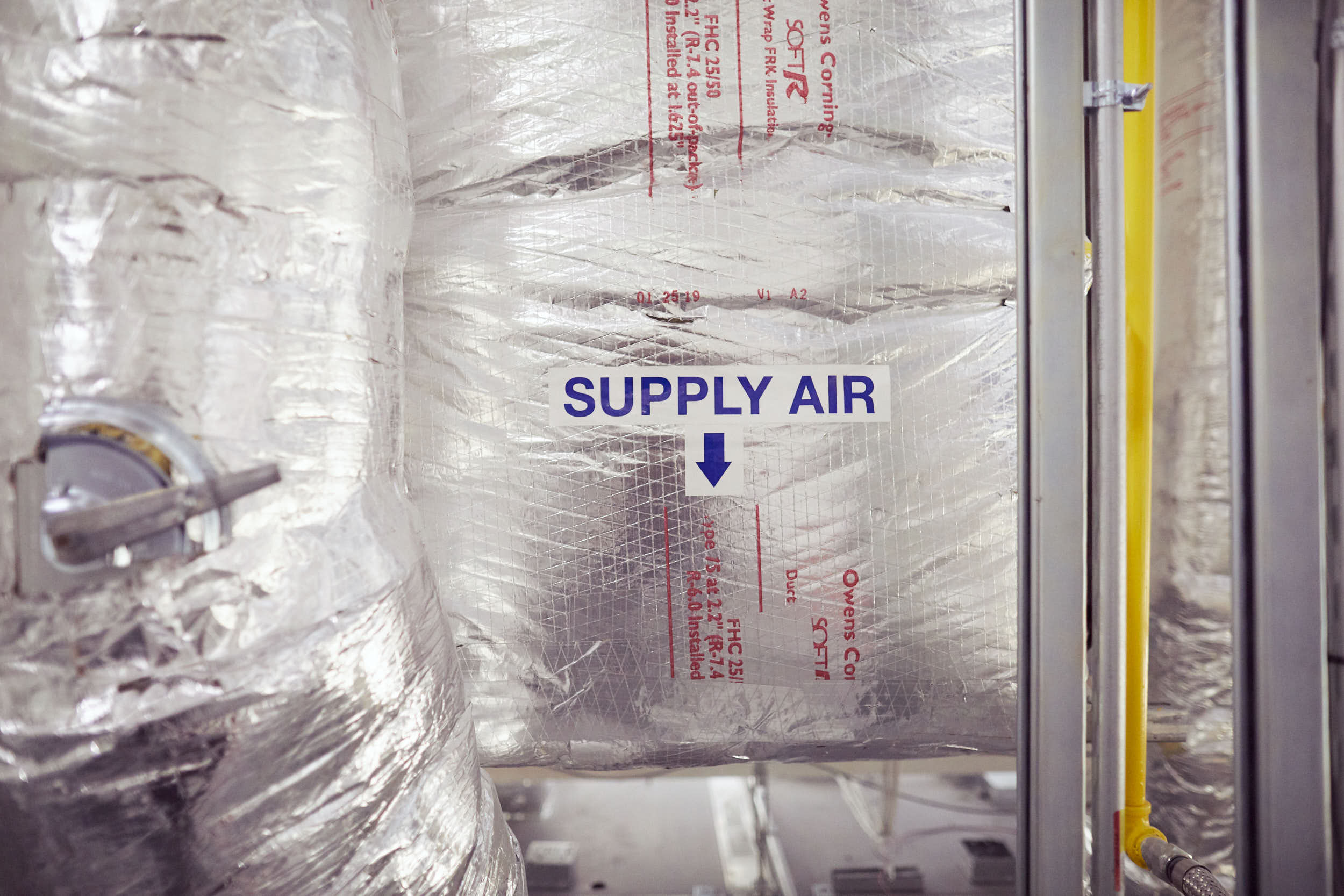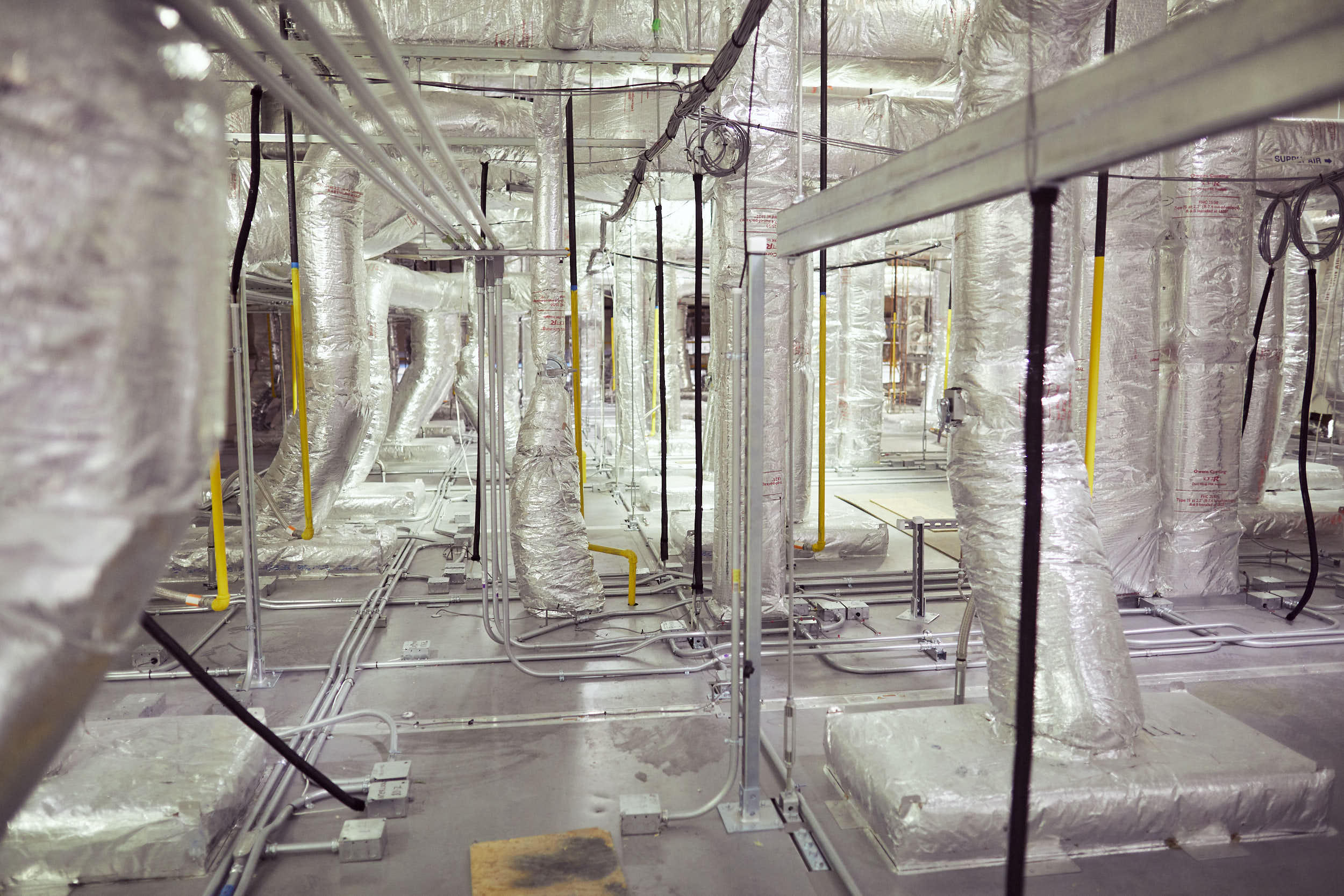
It is tempting to call HVAC systems the “lungs” of a modular cleanroom, because they quite literally are just that. In a larger sense, HVAC is the metaphorical heart of a cleanroom—the thing that creates and maintains the controlled environment that the cleanroom walls, cleanroom ceilings and floors merely contain.
While AES Clean Technology is known as a leading modular cleanroom manufacturer, our cleanroom story actually began as a mechanical design and installation firm. So, while our modular walls and ceiling designs have rightfully gained attention over the years, HVAC is at the core—the heart, if you will—of what we do.
When working with clients, we are often asked what type of HVAC system—direct ducted or plenums—is best?
The answer is: Yes.
It depends on why you are building a cleanroom and the processes that will go on inside that cleanroom.
Defining Terms
There are two basic HVAC systems used in cleanroom design—and they both do the job of circulating cool, filtered air to maintain a consistent environment (that is, temperature, pressure, humidity) within your cleanroom. We will explain them briefly:
In general, direct ducted systems use an air handler and a supply duct that feeds branch ducts to HEPA-filtered outlets in the rooms, and then use air intakes to cycle the air back to the air handler.
Plenum systems also use an air handler and a supply duct, but in this case, it moves the air to a box—the plenum—which is a sealed space that provides pathways for the conditioned air at higher pressures. Fans equipped with HEPA filters then force the air down into the cleanroom space. They are particularly good for extreme air turnover in a limited space.

Use Cases
AES Clean Technology began as a mechanical engineering firm specializing in cleanroom design and continues to remain experts in the field, in addition to our reputation for innovative modular cleanroom walls and ceilings.
Direct ducted systems work well for most life science cleanroom needs, quite capable of maintaining pressure, temperature, and humidity–the “Big Three” for cleanroom environments–at an ISO 7 or ISO 8 level.
Plenums are particularly good at managing particulate counts, which is why they first saw adoption in cleanrooms built for microelectronics. For that reason, they’ve seen more adoption for cell and tissue culture laboratories, which require the sterile environment of an ISO 5, ISO 4, or even lower level.
All About Sharing the Loads
If plenums do such a good job at cleaning the air, why not use them for all applications? With every system, there are always tradeoffs. While plenums are designed to deliver more air changes, which is why they are particularly popular with the microelectronics industry, they are less adept at cooling.
Consider the heat loads generated in your average life sciences manufacturing cleanroom. Refrigerators, incubators, centrifuges, and other common technologies all generate enough heat that, without cooling, makes a cleanroom uncomfortable for workers. The workers themselves generate heat and humidity, which becomes worse as the temperature rises. People can be a little gross in warm rooms.
Also consider the added cost, electrical load, and potential points of failure of the added in-line fans required in a plenum-cooled cleanroom–and do not forget the added, complicated maintenance of the HEPA filters associated with each fan. Whether you want to maintain negative pressure and cycle air continuously through the system to do so or positive pressure, which needs a bigger fan to push more air, plenums can become costly for large areas.
On the other hand, plenums can be simpler for constrained ceiling space, which is why you often see them in the sort of urban high-rise laboratories popular with academia and start-ups.

The Best System is the One that Works for Your Cleanroom Needs
To get back to our answer, which is best? They both are. The real expertise is knowing exactly when to use which system. Increasingly, we have designed hybrid systems based on the needs of our customers–cleanrooms within cleanrooms, where a plenum drives an ISO 5 facility within a direct duct-cooled ISO 7 space.
At AES Clean Technology, we design modular cleanrooms based on your needs. We consider what might offer the best value and efficiency. The performance of your cleanroom depends heavily on the air handling. We have built thousands of commissioned cleanrooms, meeting or exceeding the needs of our customers every single time. Reach out to us today to learn how to design the best cleanroom for your needs.
About the Author:
Kevin Kofke, director of engineering, mechanical engineer
Kevin received his training in mechanical engineering at Penn State University. He has been delivering design builds for cleanrooms for over 20 years. He is a father of four, avid cyclist and a coffee lover.
Takeaways
- There is no one solution for every cleanroom.
- Direct ducts offer better cooling and simplifies the control of pressure and humidity
- Plenums are good in constrained spaces and offer exceptional particulate control
- The best solution is what works best for you in terms of cost, performance, efficiency, and ongoing maintenance
- Contact us today for more information or even a second opinion
